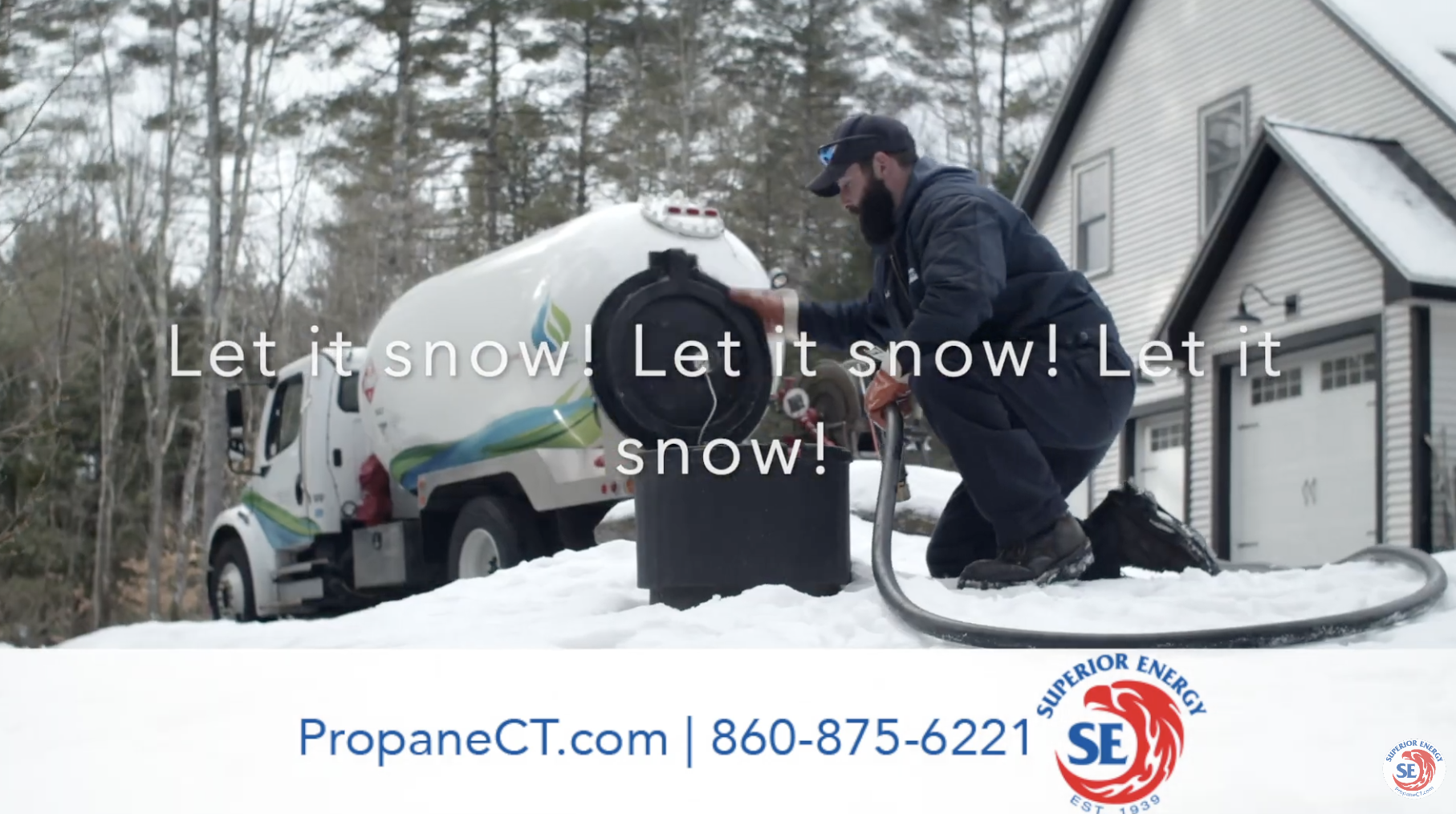Preparing your home and property for winter ensures that you and your family are best prepared to safely enjoy the season in comfort.
These 10 tasks can help increase your home’s energy efficiency and protect it against damage caused by rain, snow, and freezing temperatures.
Create an action plan for propane tank and home safety in heavy snow.
Be aware of your tank’s location - we recommend you attach a brightly colored flag to the top of your propane tank so it can be found easily, even in deep snow, for when you need to shovel a path for deliveries. Never shovel snow against or on top of your tank or a vent. Use a broom or your hands to remove snow and ice from the tank rather than a shovel, salt or ice-melting chemical. Never kick your tank to break up snow and ice. Protect your tank from melting ice dripping from overhead. And be sure to sign up for a smart remote-tank monitoring option to monitor your tank propane levels remotely.Feel for under-door drafts.
You may be surprised at how much energy we lose underneath doors that are not properly sealed. Use a “draft snake” or replace the weather stripping beneath your door. Inspect caulking around windows and doors, and repair as necessary.Seal around windows.
You may be losing heat around your windows. By making sure they are properly caulked, you may cut your heating bill dramatically.Add insulation – especially around pipes.
Many older homes have little or no insulation. Adding insulation to the attic, walls, or floors can make a big difference in winter (conserving heat) and summer (keeping the cool air in). Insulation helps with home efficiency as well as the protection of plumbing pipes. Inspect and add insulation, if needed, around exposed pipes located close to exterior walls, in unheated basements, and attic areas. Have cold spots in your home? Consider a professionally installed sleek space heater.Update your appliances.
By upgrading an old furnace, or purchasing more efficient appliances, you can increase your home’s energy efficiency while keeping it warm during those cold weather months.Install a programmable thermostat and keep the temperature no lower than 65 degrees.
Install smart home thermostats that allow you to monitor and control temperature settings remotely. Keeping temperatures lower at night can save you a lot of money on heating costs. But dropping below 55 degrees can lead to many other problems. It’s best to keep your home no lower than 65 degrees. You also need to make sure your pipes don’t freeze and expand, causing connecting faucets and pipes to freeze and break. Smart thermostats or temperature monitors will wirelessly alert you to unusually low temperatures in the home, which is a possible precursor to freezing pipes. If temperatures do drop, make sure inside doors are open so warm air can easily circulate in the house — this includes leaving kitchen and bathroom cabinets open to allow warm air to circulate around the plumbing.Protect water pipes from freezing.
Install a flow-based water leak-detection system with an automatic water shutoff. This device can alert you to water leaks, low pressure, or freezing pipe conditions, allow you to turn your water on or off remotely, and can automatically shut it off in emergency situations. Additionally, cover all outside faucets with insulation kits. Disconnect exterior hoses and install frost-free faucets for hose bibs (spigots) or protect them from freezing with faucet insulators. Check to make sure gutters and downspouts are secure and clean. They should slope away from your house, with extensions a minimum of 4’ from the home, or be connected to an underground drainage system.Lower your water heater temperature.
By keeping the maximum temperature of your water heater just a little lower it will consume less energy, which can also save money.Consider installing a backup generator.
Your furnace and water heaters cannot do their job if there is no electricity. Consider a dual use generator for natural gas and liquid propane or gasoline to automatically power your home. Besides maintaining heating systems, a generator can keep the WiFi connected, the leak detection operating, and cold food in your refrigerator.Clean your gutters regularly.
Clear roof gutters, downspouts, and exterior drainage systems so they can drain properly and won’t cause issues with ice build-up or water overflow during a storm. When it does snow, clearing snow is also something you should do for your own safety in order to keep snow off the tank or fill-pipe and away from any vents. A blocked vent can cause a back-up of carbon monoxide in your home.









